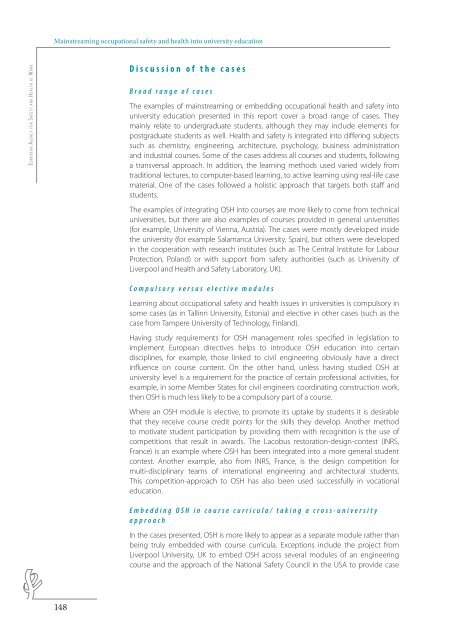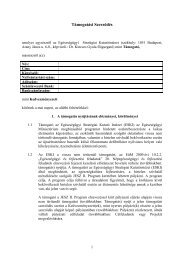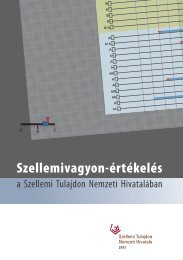Mainstreaming occupational safety and health into university ...
Mainstreaming occupational safety and health into university ...
Mainstreaming occupational safety and health into university ...
Create successful ePaper yourself
Turn your PDF publications into a flip-book with our unique Google optimized e-Paper software.
<strong>Mainstreaming</strong> <strong>occupational</strong> <strong>safety</strong> <strong>and</strong> <strong>health</strong> <strong>into</strong> <strong>university</strong> educationE u r o p e a n Ag e n c y f o r Sa f e t y a n d He a l t h a t Wo r kDiscussion of the casesBroad range of casesThe examples of mainstreaming or embedding <strong>occupational</strong> <strong>health</strong> <strong>and</strong> <strong>safety</strong> <strong>into</strong><strong>university</strong> education presented in this report cover a broad range of cases. Theymainly relate to undergraduate students, although they may include elements forpostgraduate students as well. Health <strong>and</strong> <strong>safety</strong> is integrated <strong>into</strong> differing subjectssuch as chemistry, engineering, architecture, psychology, business administration<strong>and</strong> industrial courses. Some of the cases address all courses <strong>and</strong> students, followinga transversal approach. In addition, the learning methods used varied widely fromtraditional lectures, to computer-based learning, to active learning using real-life casematerial. One of the cases followed a holistic approach that targets both staff <strong>and</strong>students.The examples of integrating OSH <strong>into</strong> courses are more likely to come from technicaluniversities, but there are also examples of courses provided in general universities(for example, University of Vienna, Austria). The cases were mostly developed insidethe <strong>university</strong> (for example Salamanca University, Spain), but others were developedin the cooperation with research institutes (such as The Central Institute for LabourProtection, Pol<strong>and</strong>) or with support from <strong>safety</strong> authorities (such as University ofLiverpool <strong>and</strong> Health <strong>and</strong> Safety Laboratory, UK).Compulsory versus elective modulesLearning about <strong>occupational</strong> <strong>safety</strong> <strong>and</strong> <strong>health</strong> issues in universities is compulsory insome cases (as in Tallinn University, Estonia) <strong>and</strong> elective in other cases (such as thecase from Tampere University of Technology, Finl<strong>and</strong>).Having study requirements for OSH management roles specified in legislation toimplement European directives helps to introduce OSH education <strong>into</strong> certaindisciplines, for example, those linked to civil engineering obviously have a directinfluence on course content. On the other h<strong>and</strong>, unless having studied OSH at<strong>university</strong> level is a requirement for the practice of certain professional activities, forexample, in some Member States for civil engineers coordinating construction work,then OSH is much less likely to be a compulsory part of a course.Where an OSH module is elective, to promote its uptake by students it is desirablethat they receive course credit points for the skills they develop. Another methodto motivate student participation by providing them with recognition is the use ofcompetitions that result in awards. The Lacobus restoration-design-contest (INRS,France) is an example where OSH has been integrated <strong>into</strong> a more general studentcontest. Another example, also from INRS, France, is the design competition formulti-disciplinary teams of international engineering <strong>and</strong> architectural students.This competition-approach to OSH has also been used successfully in vocationaleducation.E m b e d d i n g O S H i n c o u r s e c u r r i c u l a / t a k i n g a c r o s s - u n i v e r s i t yapproachIn the cases presented, OSH is more likely to appear as a separate module rather thanbeing truly embedded with course curricula. Exceptions include the project fromLiverpool University, UK to embed OSH across several modules of an engineeringcourse <strong>and</strong> the approach of the National Safety Council in the USA to provide case148
















